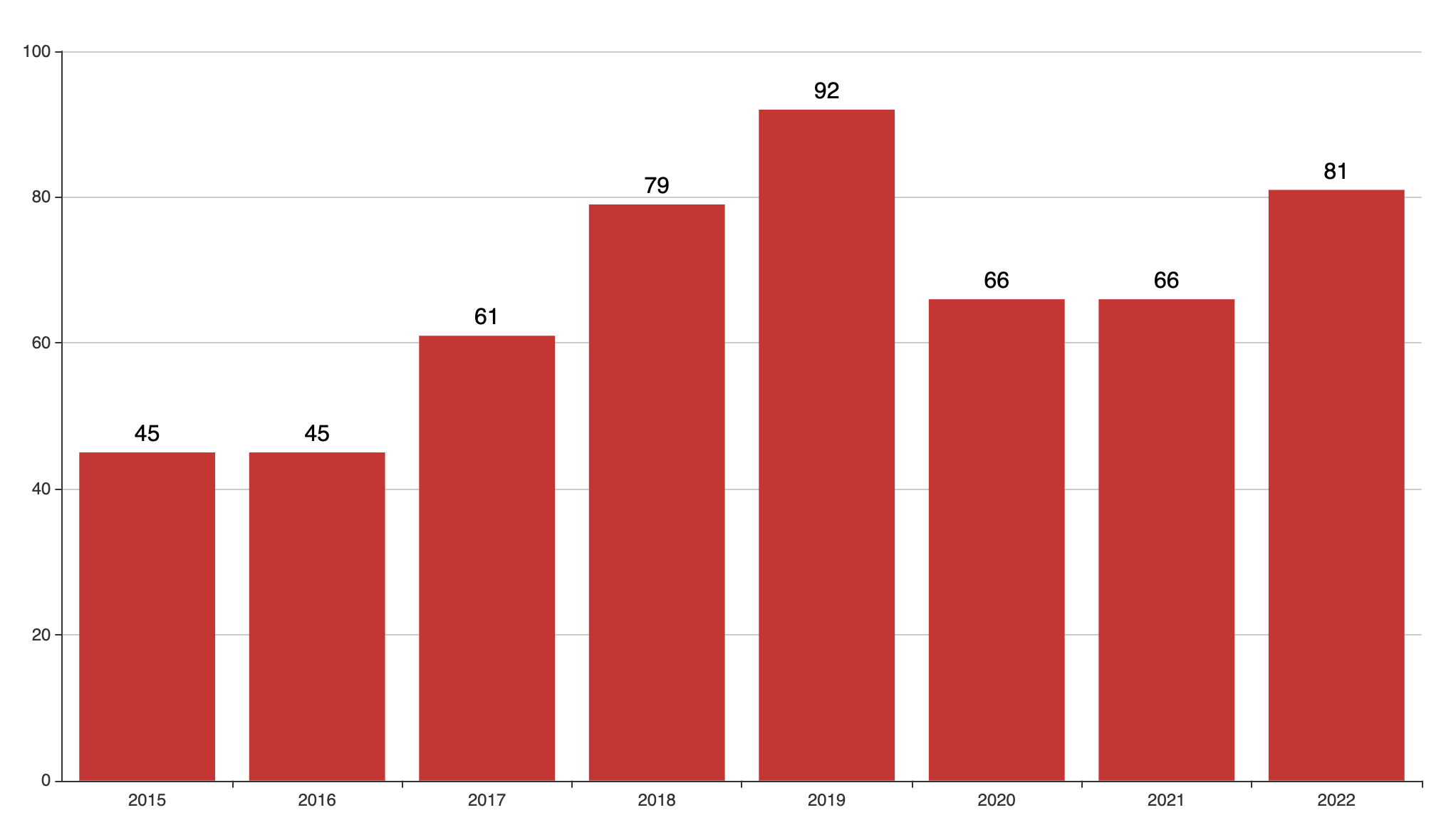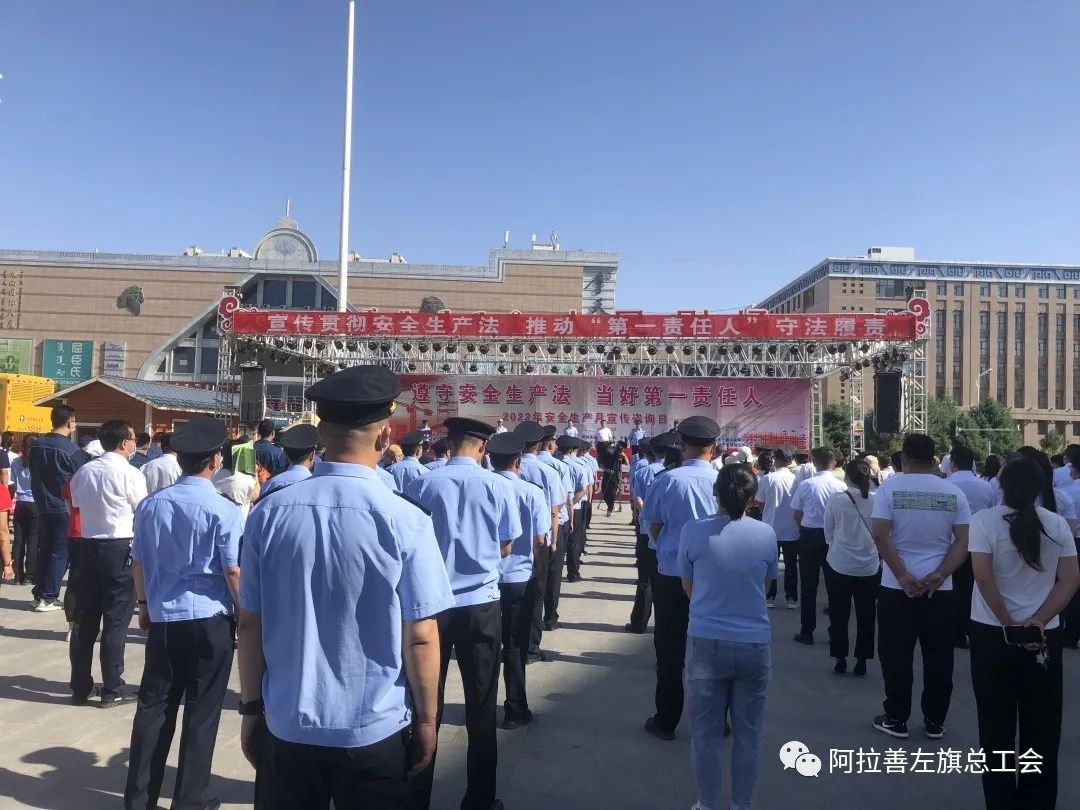- On 22 February, a coal mine collapsed in Inner Mongolia, and a search and rescue operation for dozens of missing workers is ongoing.
- CLB analyses our Accident Map data since 2014 to find that coal mining accidents have become less severe over time, but they still account for a significant portion of all accidents we record.
- CLB calls on China’s official trade union to better monitor workplace safety and enable frontline workers to raise their voices about unsafe conditions before accidents occur, in line with provisions of China’s Work Safety Law.
Editor’s Note: On 21 June 2023, Xinhua News Agency reported that authorities announced that the missing workers have all been pronounced dead, and the official death toll of the accident is 53. Unusually, the result was announced four months after the accident and through the Propaganda Department, likely in an attempt to reduce focus on the tragedy. This is the largest number of deaths in a single mining accident recorded in CLB’s Workplace Accident Map, which began recording in 2014.
An ongoing search and rescue is underway in Alxa Left Banner, Inner Mongolia, at a collapsed coal mine. At the time of this writing, at least five workers were killed, six are injured, and 48 remain missing from being trapped after the collapse occurred on 22 February. A landslide later that same day put the rescue effort on pause.
According to state media outlet Global Times, China’s leader Xi Jinping personally called for an “all-out” search and rescue operation, and the Ministry of Emergency Management has been leading the effort. An employee told reporters that the Xinjing Coal Mining Company, which owns the mine that collapsed, has about 600 workers, and the mine was in production throughout the recent Lunar New Year holiday period.
Global Times also reported that as recently as June 2022, the mine had been punished for work safety violations and hazards, and it frequently defaults on its debt. Business records show that the mine is the subject of hundreds of lawsuits since 2014.
Many of the trapped workers were reportedly hired through dispatch labour agencies.

Photograph: Sadik Gulec / Shutterstock.com
CLB Accident Map data shows that fewer workers are dying in mining accidents, but these still account for a significant portion of total accidents recorded each year
According to official government data, in 2022 there were 168 coal mining accidents that caused 245 deaths in China. These account for about 45 percent of all types of mining accidents. The leading causes of coal mining accidents are collapse and transportation accidents.
China Labour Bulletin’s Accident Map is not capable of recording every accident that occurs, but it gives a sense of general trends and insight not always revealed in official data. In 2022, our map recorded 81 coal mining accidents, accounting for 15 percent of all workplace accidents we recorded.
Number of coal mining incidents recorded in CLB’s Accident Map annually (2015-2022)

As for broader trends, since our map began recording incidents in 2014, coal mining accidents make up about 12 percent of incidents. Coal mining accidents obviously are clustered in top coal-producing geographies, including Shanxi province, which logs almost 20 percent of coal mining accidents; Shaanxi province with 4.3 percent; followed by Inner Mongolia and Sichuan province, with about 3 percent each. Notably, in 2020 and 2021, Inner Mongolia overtook Shanxi province in the number of coal mining accidents we recorded, but Shanxi raced back to the top with 40 accidents in 2022 alone.
Over time, we can also see that the severity of accidents has decreased, with accidents in recent years rarely causing over ten deaths each. Over 85 percent of coal mining accidents cause nine or fewer deaths each.
To avoid a repeating cycle of accidents and investigations, the trade union must implement preventative measures to protect workers’ lives
China’s official method of workplace safety administration relies on industry closures and inspection campaigns after the fact of a major accident. However, the key to workplace safety is to prevent and detect hidden dangers on a regular basis, which requires frequent and ongoing inspections at the frontlines of the job. This is only possible through workers themselves raising safety issues, and the union channelling concerns and representing workers facing unsafe conditions. Unless unions take up their responsibility of supervising workplace safety, as written in China’s Work Safety Law, China’s workers' lives will continue to be at grave risk.
According to one survivor of the mine collapse in Inner Mongolia who spoke with state media, a landslide was detected at 1:15 in the afternoon:
I saw that the situation was getting more and more serious, and an evacuation was organised, but it was too late, the mountain just collapsed.
If a trade union had been at the frontlines and put forward a plan in the interest of workers, as specifically outlined as a union role in Article 60 of the Work Safety Law, perhaps the evacuation could have been conducted in time. It is unclear if the Xinjing Coal Mining Co. had established an enterprise trade union within the company. If so, it failed to detect workplace dangers.
The Alxa Left Banner trade union (a banner is an administrative division equivalent to the county level in other regions of China) announced in early February 2023 several important work objectives for the first quarter of this year, but none involve improvements to workplace safety. In 2022, the union’s main workplace safety activity was hosting an event during China’s June Work Safety Month, at which they handed out materials on China’s laws and regulations.

Photograph: Alxa Left Banner Federation of Trade Unions conducts June 2022 Work Safety Month events / Alxa Left Banner Federation of Trade Unions web article
Rather than the trade union leading on workplace safety and prevention in this case, it was the Inner Mongolia authorities that emphasised the importance of workplace safety after the accident had already occurred. The autonomous region’s party secretary announced on the day of the accident that a new round of safety inspections would be implemented at coal mines across Inner Mongolia.
This official response follows a familiar pattern in China of a repeating cycle of serious workplace accidents, dramatic rescues, and investigations that ultimately fail to prevent the next accident. China’s workers deserve better, and they should be able to assert their right to safe workplaces as outlined in China’s recently-amended Work Safety Law.
Further CLB reading:
- What You Need to Know About Workers in China: Work safety (May 2020)
- Ministry of Emergency Management limited in its power to assist injured workers (December 2021)
- Coal mines hastily restart production to manage energy crisis, leading to deadly accidents (April 2022)
